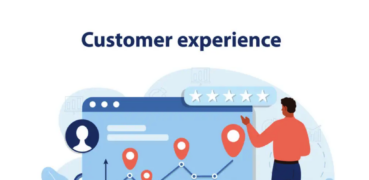Navigating the Stages of the Product Lifecycle: A Guide for Product Managers

Product management is a dynamic discipline that involves guiding a product from its initial conception to its eventual maturity or decline. Understanding the stages of a product lifecycle is essential for product managers who want to make informed decisions and drive success across each phase. While the principles of lifecycle management are often discussed, many product managers fail to anticipate the unique challenges and opportunities that arise at different stages. In this blog, we’ll dive into the four key stages of the product lifecycle—Introduction, Growth, Maturity, and Decline—offering strategies to navigate them effectively.
Stage 1: Introduction
The Introduction phase is the most uncertain and delicate phase of a product’s lifecycle. The product is new to the market, and product-market fit is still being tested. At this stage, the focus is primarily on user acquisition, product development, and generating early feedback.
Key Challenges:
- Market Uncertainty: At this stage, it’s unclear whether the product will resonate with the target audience.
- Low Awareness: As the product is new, building visibility and generating buzz is critical.
Strategies for Success:
- Test Early and Often: During the introduction phase, rapid prototyping and user testing are essential to validate assumptions. Emphasize customer discovery and refine the product based on early feedback.
- Focus on Early Adopters: Target early adopters who are likely to embrace new technologies and provide valuable feedback. These users are critical for generating momentum.
- Minimal Viable Product (MVP): Launch with an MVP to minimize risk and avoid overcommitting resources. Gradually iterate as you gather insights on user behavior and preferences.
Stage 2: Growth
Once a product achieves some level of market fit, it enters the Growth stage. This is where demand begins to increase, and scaling becomes the focus. Product enhancements, improving user experience, and expanding the customer base are priorities.
Key Challenges:
- Scaling Efficiently: Growing demand puts pressure on the product and team. Infrastructure, support, and operations need to scale in line with user growth.
- Market Competition: As success becomes visible, competitors will enter the market or adjust their strategies to compete.
Strategies for Success:
- Double Down on Acquisition: Invest in marketing, partnerships, and distribution channels to reach new users. Growth hacking techniques can help optimize efforts to onboard customers quickly.
- Refine the Product: While the product gained initial traction, continuous improvement is necessary to enhance usability, add features, and optimize performance. Keep a close eye on user data and prioritize features that address emerging customer needs.
- Enhance Customer Support: As the user base grows, so will customer support requirements. Implement self-serve tools, build a knowledge base, and consider scaling support teams to handle increased inquiries.
- Optimize Monetization: This stage is a great time to experiment with pricing strategies, such as tiered plans or upselling premium features. Focus on maximizing lifetime value (LTV) of customers.
Stage 3: Maturity
The Maturity phase is when the product has fully established itself in the market and growth begins to slow. Most products live in this phase for an extended period. The focus shifts from aggressive expansion to maintaining market share, optimizing efficiency, and maximizing profitability.
Key Challenges:
- Market Saturation: Competitors are likely to have caught up, and the market becomes crowded.
- Slower Growth: The explosive growth of earlier phases begins to plateau, and acquiring new users becomes more difficult.
Strategies for Success:
- Defend Market Share: In a saturated market, maintaining your position is as important as growing. Focus on customer retention, brand loyalty, and product differentiation.
- Cost Optimization: With slower growth, profitability takes center stage. Streamline operations, reduce inefficiencies, and look for ways to cut costs without sacrificing quality.
- Innovation in Adjacent Markets: Mature products often find growth by innovating within adjacent markets or launching complementary features. Stay innovative, even if your core product has stabilized.
Stage 4: Decline
All products eventually enter a Decline phase, where the market shrinks, user interest wanes, or newer technologies replace the product. The objective is to manage this stage strategically, either by pivoting, investing in innovation, or gracefully phasing out the product.
Key Challenges:
- Decreased Demand: Users may move on to newer products, and the overall demand starts to decrease.
- Technological Obsolescence: Newer technologies can render your product less relevant.
Strategies for Success:
- Explore Exit Strategies: As demand declines, you may need to phase out the product, sell it, or pivot to a new direction. Develop a plan for sunsetting the product while minimizing disruption for customers.
- Repurpose Assets: Look for ways to reuse or repurpose existing infrastructure, user data, or technologies for new products or services.
- Harvest Remaining Value: In some cases, companies can continue to offer the product to a niche market, ensuring it generates revenue even in its declining phase. This is often referred to as a “cash cow” strategy.
Conclusion: Mastering the Product Lifecycle
Product lifecycle management is an ongoing balancing act that requires adaptability and foresight. Whether you’re launching a new product or managing a mature one, understanding the unique challenges and opportunities of each stage can give you the clarity needed to make informed decisions. By implementing evidence-based frameworks, continually iterating on your product, and aligning your team around the lifecycle stage, you can drive sustainable growth and long-term success.







